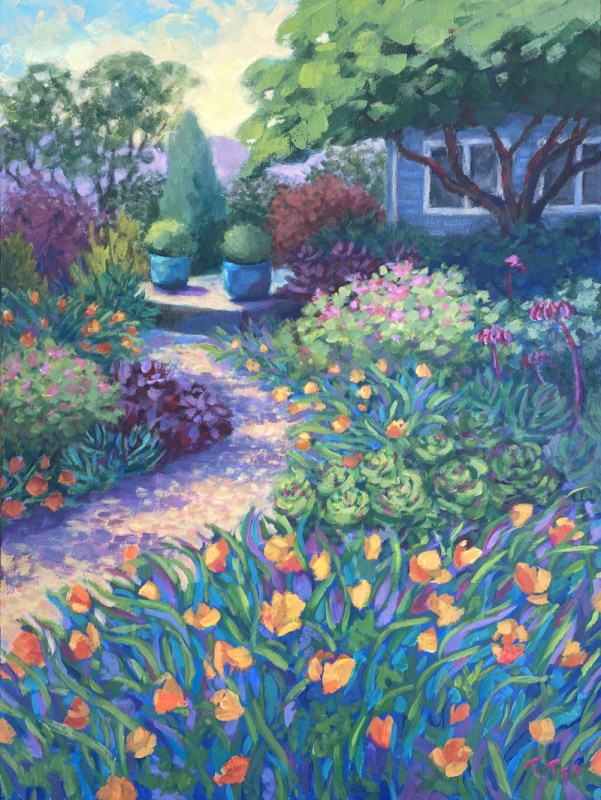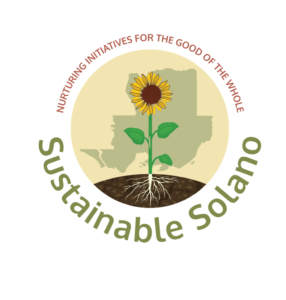Public Art Makes Spaces More Walkable and Welcoming
Public art has a way of transforming everyday spaces into places where people want to slow down, gather, and enjoy their surroundings. Too often, we move through our cities at a rushed and urgent pace, focused on getting from one place to the next. But sometimes, we need reminders that public space should be made for us to enjoy, linger in, and connect with one another.
That’s exactly what the Fairfield in Full Bloom mural set out to do. This vibrant piece of art captures the diverse and friendly spirit of Fairfield, bringing color, creativity, and warmth to the area. At the community mural event on March 22, we invited community members to make their mark — literally — by adding their handprints to the mural. We are grateful to the community members and city leaders who came out to the event, and to the City of Fairfield, Select Furniture property owner, and artist Sheree Rayford for working with us to make this mural a reality.

Despite the light sprinkling rain and cloudy skies, the event was bright and uplifting. We engaged the community in air quality education, and one lucky participant even took home a DIY air purifier! Attendees could review the community-driven air quality action plan that was created through engagement with Fairfield residents. Copies of the plan are now with city staff and at the local libraries. We also got creative by painting kindness rocks, and decorating them with inspiring messages to spread joy long after the event. And in a collective act of optimism and renewal, we planted flowers and dispersed seeds, adding new life and beauty to the area.
Public art is more than just decoration — it invites us to stop and spend time outside. By making our streets more walkable, welcoming, and meaningful, it fosters a deeper connection between people and the places they call home. Fairfield in Full Bloom is now part of the landscape, a reminder that our city is meant to be enjoyed, one step at a time.

Artist Sheree Rayford
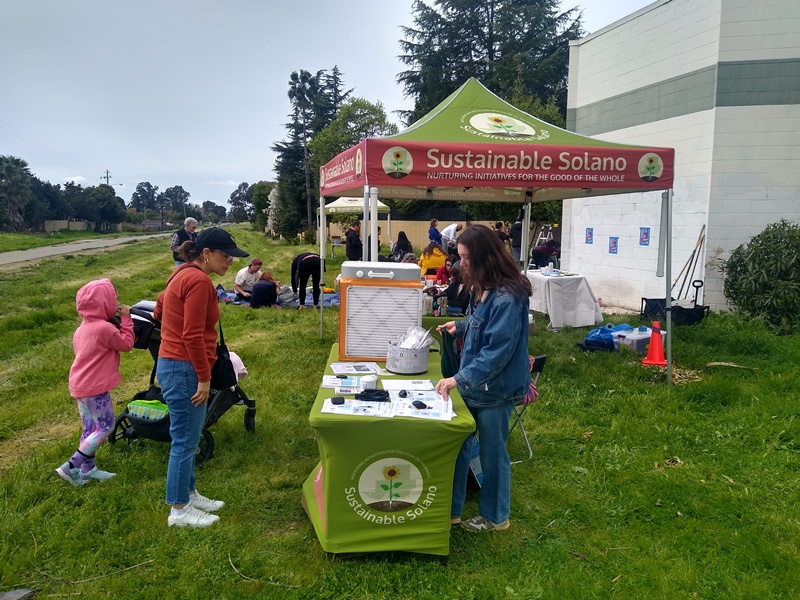
As part of our work in Fairfield around air quality, community members have asked about ways to create more walkable spaces. Some of this work has to be done through large changes, such as the ideas envisioned by our Youth Air Protectors in their street redesign projects. But other changes can be done on a smaller scale, such as planting trees in front yards that will shade sidewalks and improve the air, as was done through two Fairfield garden installations through this program. Then there is what can be done on a community scale. We hope this mural will invite residents to use, enjoy and care for the trail more often.
 This mural project and Sustainable Solano’s Fairfield air quality work is part of California Climate Investments, a statewide initiative that puts billions of Cap-and-Trade dollars to work reducing greenhouse gas emissions, strengthening the economy, and improving public health and the environment — particularly in disadvantaged communities.
This mural project and Sustainable Solano’s Fairfield air quality work is part of California Climate Investments, a statewide initiative that puts billions of Cap-and-Trade dollars to work reducing greenhouse gas emissions, strengthening the economy, and improving public health and the environment — particularly in disadvantaged communities.


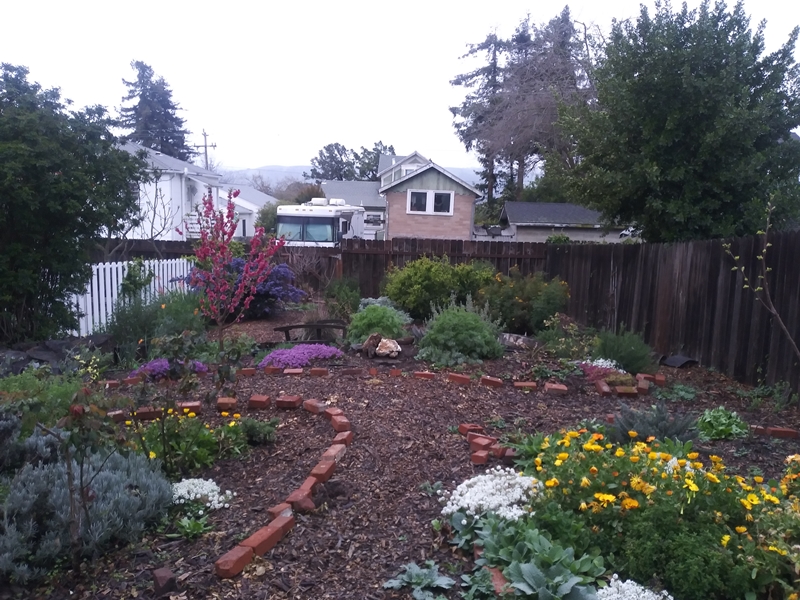


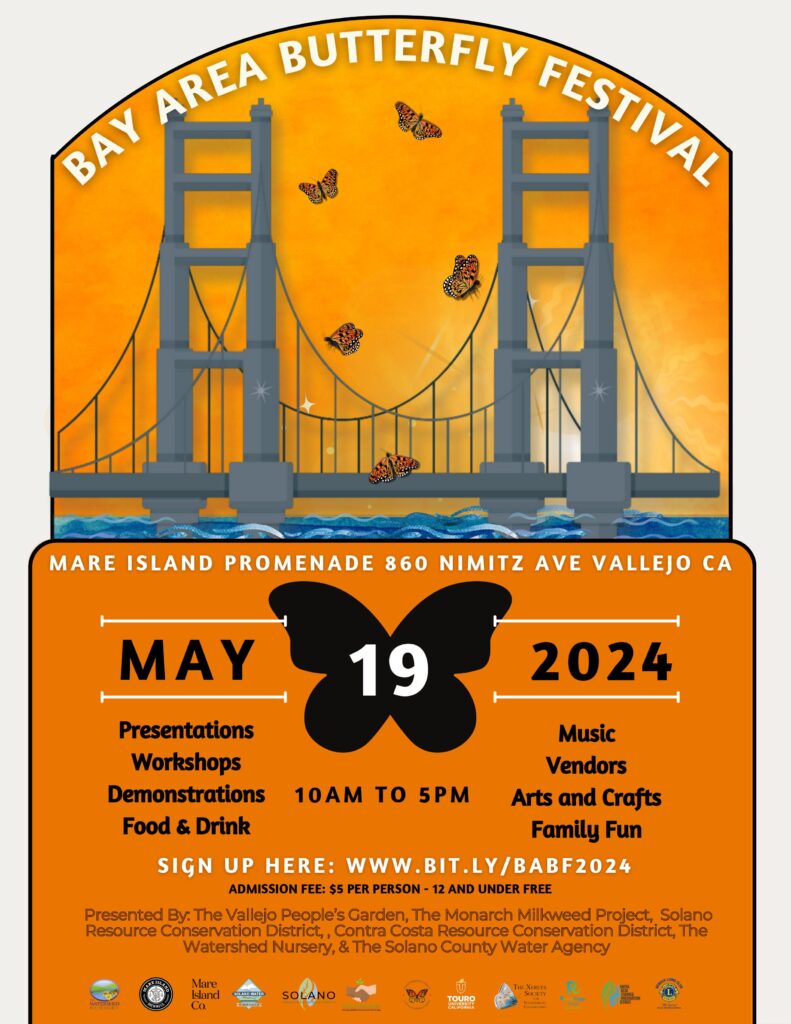
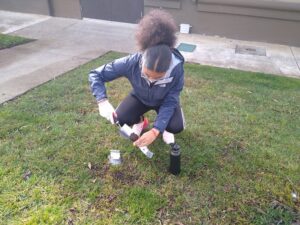 Test your soil appropriately — A variety of tests are available to everyday people and many are fairly inexpensive. The most accessible type of test is probably a “nutrient panel” (often called a “soil paste” test), which gives you an idea of the nutrient content of your soil. This will give you a breakdown of each nutrient, soil pH, salinity, etc., depending on the lab and exact type of test. You can learn more about what needs to be addressed in your garden (e.g. a lack of nitrogen, too high a pH, etc.).
Test your soil appropriately — A variety of tests are available to everyday people and many are fairly inexpensive. The most accessible type of test is probably a “nutrient panel” (often called a “soil paste” test), which gives you an idea of the nutrient content of your soil. This will give you a breakdown of each nutrient, soil pH, salinity, etc., depending on the lab and exact type of test. You can learn more about what needs to be addressed in your garden (e.g. a lack of nitrogen, too high a pH, etc.).